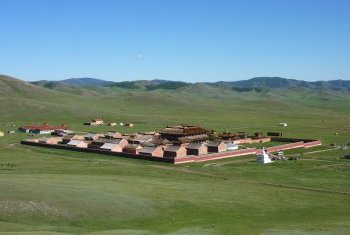Mongolia
Amarbayasgalant monastery
The Amarbayasgalant monastery was built between 1727 and 1736 as the final resting place of Undur Gegeen Zanabazar, the first Bogd or spiritual leader of Buddhism in Outer Mongolia.
It is located in the Iven Valley near the Selenge River at the foot of Mount Burenkhan. It is one of the three largest monasteries in Mongolia. There are large tombstones throughout the valley from the Turkish period between the 3rd and 7th centuries.
Site Info
Official Information
- Full Name
- Amarbayasgalant monastery and sacred cultural landscape (ID: 5947)
- Country
- Mongolia
- Status
-
On tentative list 2014
Site history
History of Amarbayasgalant monastery
- 2014: Added to Tentative List
- Added to tentative list
- Type
- Cultural
- Criteria
Links
- UNESCO
- whc.unesco.org
All Links
UNESCO.org
- whc.unesco.org — whc.unesco.org
Community Information
- Community Category
- Religious structure: Buddhist
Travel Information
Recent Connections
News
No news.
Community Reviews
Show full reviews
I was able to visit this monastery in the summer of 2005 during a jeep tour to Khovsgol Lake. It is a rather small and out of the way monastic complex sitting by itself at the end of a beautiful valley, surrounded at the time by only a few families and their flock. I doubt much has changed. I can't attest to the sacredness and OUV of the site but the scenery was stunning and very peaceful. Being so simple and yet the second-most important monastery in the country really highlighted how undeveloped and small-scale everything in Mongolia is, especially in contrast to Russia and China. We were the only group there, saw a handful of monks doing their thing in the main temple quite quickly and spent the night with one of the local families before moving on the next morning. It was a long way from anywhere and wouldn't be worth a trip alone but it was easily the highlight on the route between Ulaan Baatar and Khovsgol.
Keep reading 0 comments

